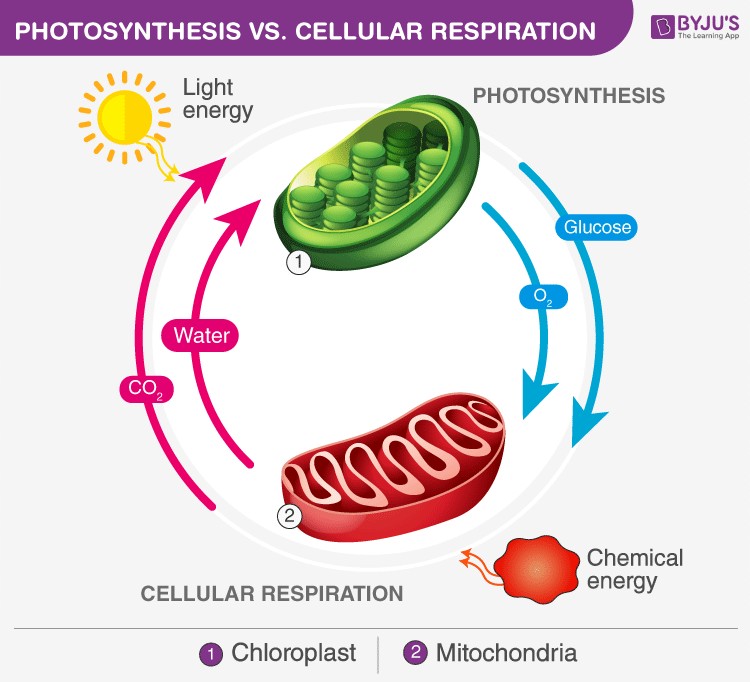Plants are known for releasing oxygen, a vital byproduct of photosynthesis. This oxygen is what we inhale, enabling our cells to perform cellular respiration and produce ATP, the energy currency of life. Photosynthesis and cellular respiration are fundamental biological processes that are intrinsically linked and essential for life on Earth. These processes, while distinct, share a fascinating relationship, often described as reverse reactions. In respiration, oxygen and glucose are consumed to produce water and carbon dioxide, whereas photosynthesis uses carbon dioxide and water, along with light energy, to generate glucose and oxygen.
Both cellular respiration and photosynthesis are integral components of a mutually beneficial cycle. Photosynthesis relies on the products of cellular respiration, and conversely, cellular respiration depends on the products of photosynthesis. They are, in many ways, the mirror image of each other. Photosynthesis is an anabolic pathway, building complex molecules, while cellular respiration is a catabolic pathway, breaking them down. Let’s delve deeper into the comparisons and differences between these two crucial processes.
Unpacking Cellular Respiration
Cellular respiration is the process by which organisms combine oxygen and food molecules, diverting the chemical energy in these substances into life-sustaining activities and discarding, as waste products, carbon dioxide and water. In simpler terms, cellular respiration is how cells break down glucose to generate energy in the form of ATP (adenosine triphosphate). This process occurs in all living organisms, from the simplest bacteria to the most complex multicellular beings. Cellular respiration primarily takes place in the mitochondria, often referred to as the “powerhouses of the cell.” The reactants in cellular respiration are glucose and oxygen, while the products are carbon dioxide, water, and ATP. This is a catabolic process because it involves breaking down larger molecules (glucose) into smaller ones, releasing energy in the process. The overall chemical equation for cellular respiration is:
C6H12O6 + 6O2 → 6CO2 + 6H2O + Energy (ATP)Decoding Photosynthesis
Photosynthesis is the remarkable process by which green plants, algae, and some bacteria convert light energy into chemical energy. This process is fundamental to life as it forms the base of most food chains on Earth. Photosynthesis occurs within organelles called chloroplasts, which contain chlorophyll, the pigment that captures light energy. The reactants for photosynthesis are carbon dioxide, water, and light energy. The products are glucose (a sugar), oxygen, and water. Photosynthesis is an anabolic process, as it uses energy to build complex molecules (glucose) from simpler ones. The overall chemical equation for photosynthesis is:
6CO2 + 6H2O + Light Energy → C6H12O6 + 6O2Key Differences Between Cellular Respiration and Photosynthesis
While both processes are vital for life, they exhibit key differences in their purpose, location, reactants, products, and energy requirements. The following table summarizes these distinctions:
| Feature | Cellular Respiration | Photosynthesis |
|---|---|---|
| Occurrence | All living organisms | Phototrophs (plants, algae, some bacteria) |
| Location | Mitochondria | Chloroplasts |
| Reactants | Glucose and Oxygen | Carbon Dioxide, Water, and Light Energy |
| Products | Carbon Dioxide, Water, and ATP (Energy) | Glucose, Oxygen, and Water |
| Process Type | Catabolic (breakdown) | Anabolic (synthesis) |
| Gas Exchange | Oxygen taken in, Carbon Dioxide released | Carbon Dioxide taken in, Oxygen released |
| Energy Role | Releases energy from food | Captures and stores energy in food |
| Energy Reaction | Exergonic (releases energy) | Endothermic (requires energy) |
| Light Requirement | Not required (occurs constantly) | Required (occurs in sunlight) |
| Chemical Equation | C6H12O6 + 6O2 → 6CO2 + 6H2O | 6CO2 + 6H2O → C6H12O6+ 6O2 |
 Diagram illustrating the relationship between Photosynthesis and Cellular Respiration
Diagram illustrating the relationship between Photosynthesis and Cellular Respiration
The Interconnectedness: A Cycle of Life
Photosynthesis and cellular respiration are not isolated processes; they are intricately linked in a cycle that sustains life. Photosynthesis utilizes carbon dioxide and water, products of cellular respiration, and converts them into glucose and oxygen. Conversely, cellular respiration uses glucose and oxygen, products of photosynthesis, to produce energy, carbon dioxide, and water. This cyclical exchange of reactants and products highlights their complementary nature. The oxygen released during photosynthesis is essential for cellular respiration in most organisms, while the carbon dioxide produced during respiration is a crucial reactant for photosynthesis. This interdependence underscores the delicate balance of nature and the fundamental role these processes play in maintaining life on Earth.
In conclusion, while photosynthesis and cellular respiration are distinct biological processes with different functions and requirements, they are fundamentally interconnected and essential for life as we know it. They represent a beautiful example of nature’s efficiency and cyclical design, where the products of one process are the reactants for the other, creating a continuous flow of energy and matter through ecosystems.

